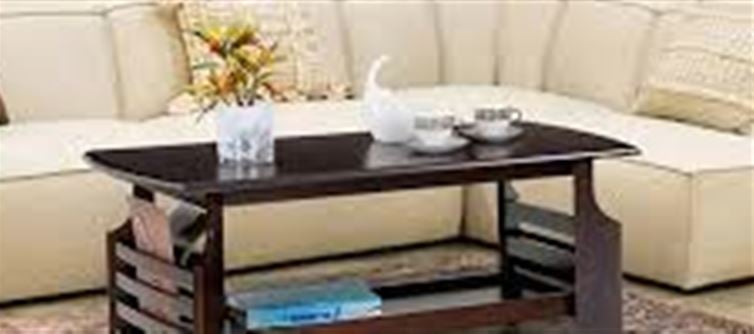
Your living room is the heart of your home—a space where your family gathers to watch TV, play games, or have long conversations with friends. Among the many elements that define this space, sofas and wooden tables are the most prominent. Choosing pieces that complement each other can elevate the aesthetic appeal and functionality of your living room.
1. Start With a Colour Harmony
The first step in creating a cohesive look is color coordination. If your sofa is a bold color, like deep blue or emerald green, consider wooden tables in neutral tones such as oak, walnut, or maple. Conversely, a neutral sofa pairs beautifully with darker or uniquely finished wooden tables, creating a balanced visual appeal.
2. Consider Size and Proportion
Sofas and wooden tables should fit the scale of your living room. A massive sofa paired with a small coffee table can look awkward, while an oversized wooden table can overwhelm a compact sofa. Measure your space carefully and maintain proportions that feel comfortable and inviting.
3. Match Styles Thoughtfully
The style of your furniture should speak the same design language. For example:
· A modern sofa with clean lines works well with sleek, minimalist wooden tables.
· A vintage or tufted sofa pairs beautifully with rustic or distressed wooden tables.
· Mid-century modern sofas look great alongside wooden tables with tapered legs and natural finishes.
4. Blend Textures and Materials
Don’t be afraid to mix textures for depth. Leather sofas can pair wonderfully with matte-finished wooden tables, while fabric sofas look cozy alongside polished or glossy wooden surfaces. Avoid clashing textures, but do experiment with contrast for a stylish touch.
5. Pay Attention to Functionality
Your living room furniture should be practical as well as beautiful. Wooden tables with drawers or shelves add storage, while a sofa with a chaise lounge offers extra seating. Consider how you use the space and choose pieces that enhance both comfort and functionality.
6. Add Accents for Cohesion
Accessorize with decorative items like rugs, cushions, and centerpieces that tie the sofa and table together. A matching wooden tray, a vase, or a set of books can create a sense of unity in your living room design.
7. Personalize Your Space
Finally, let your furniture choices reflect your personality. Whether you prefer bold contrasts, subtle tones, or eclectic styles, your living room should feel uniquely yours, blending style, comfort, and harmony.
The takeaway: Choosing sofas and wooden tables that complement each other requires attention to color, scale, style, texture, and function. By thoughtfully pairing these essential pieces, you can create a living room that is both stylish and welcoming for family and friends.
Disclaimer:
The views and opinions expressed in this article are those of the author and do not necessarily reflect the official policy or position of any agency, organization, employer, or company. All information provided is for general informational purposes only. While every effort has been made to ensure accuracy, we make no representations or warranties of any kind, express or implied, about the completeness, reliability, or suitability of the information contained herein. Readers are advised to verify facts and seek professional advice where necessary. Any reliance placed on such information is strictly at the reader’s own risk.




 click and follow Indiaherald WhatsApp channel
click and follow Indiaherald WhatsApp channel